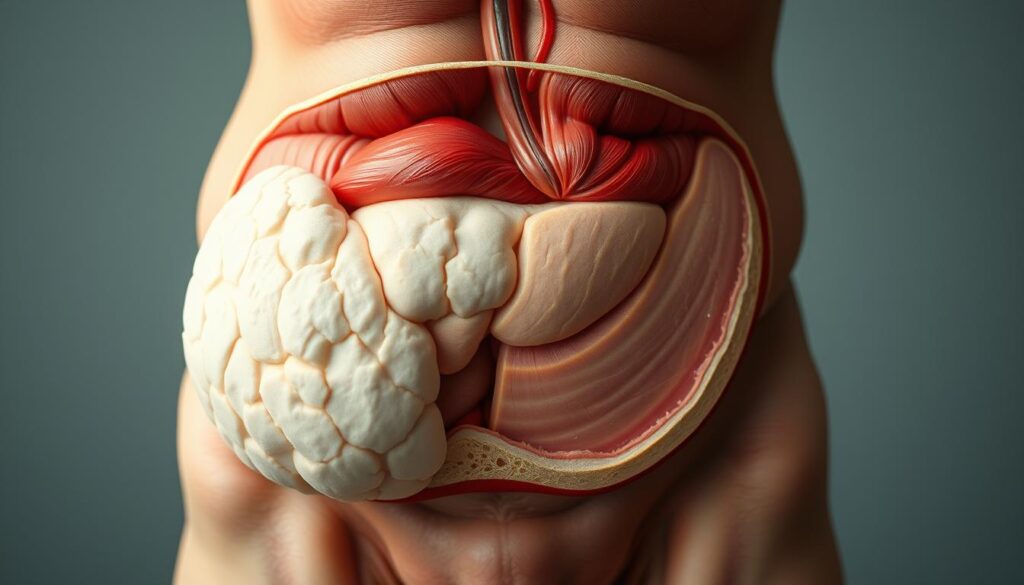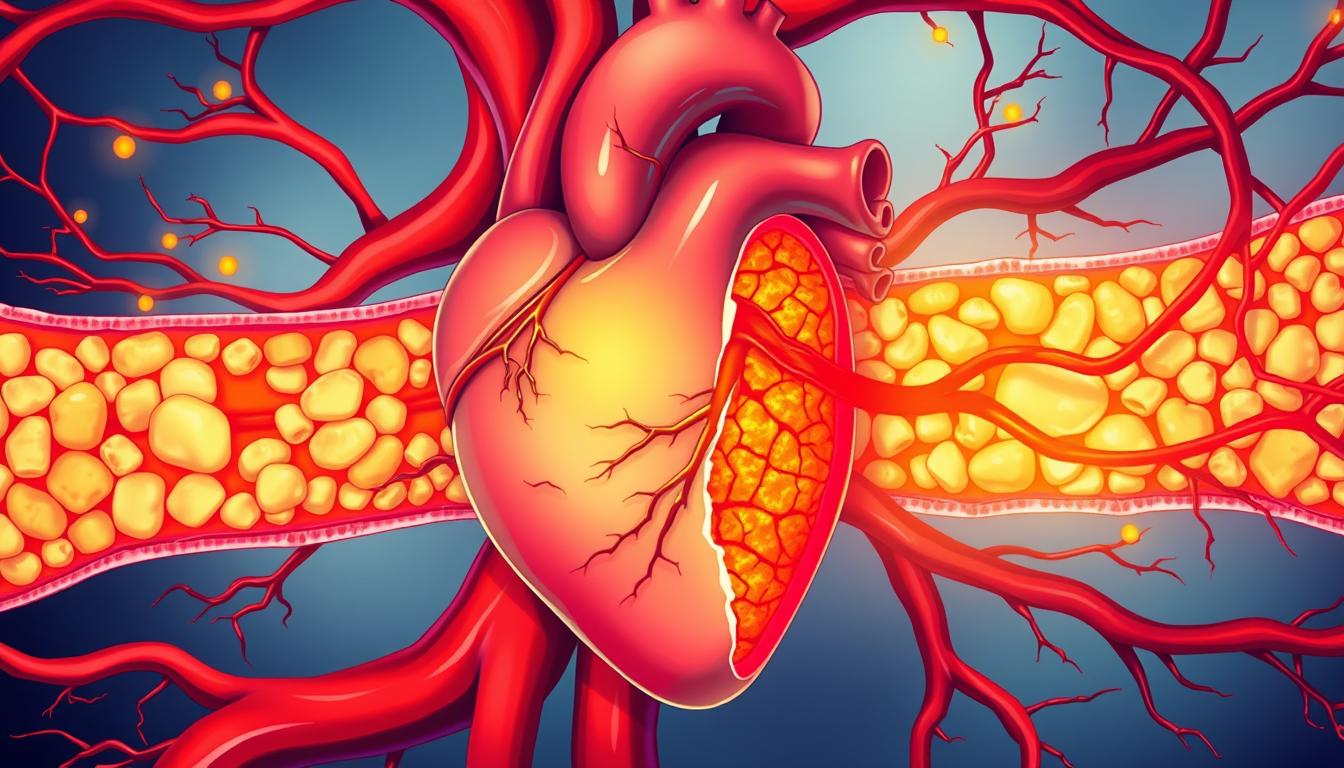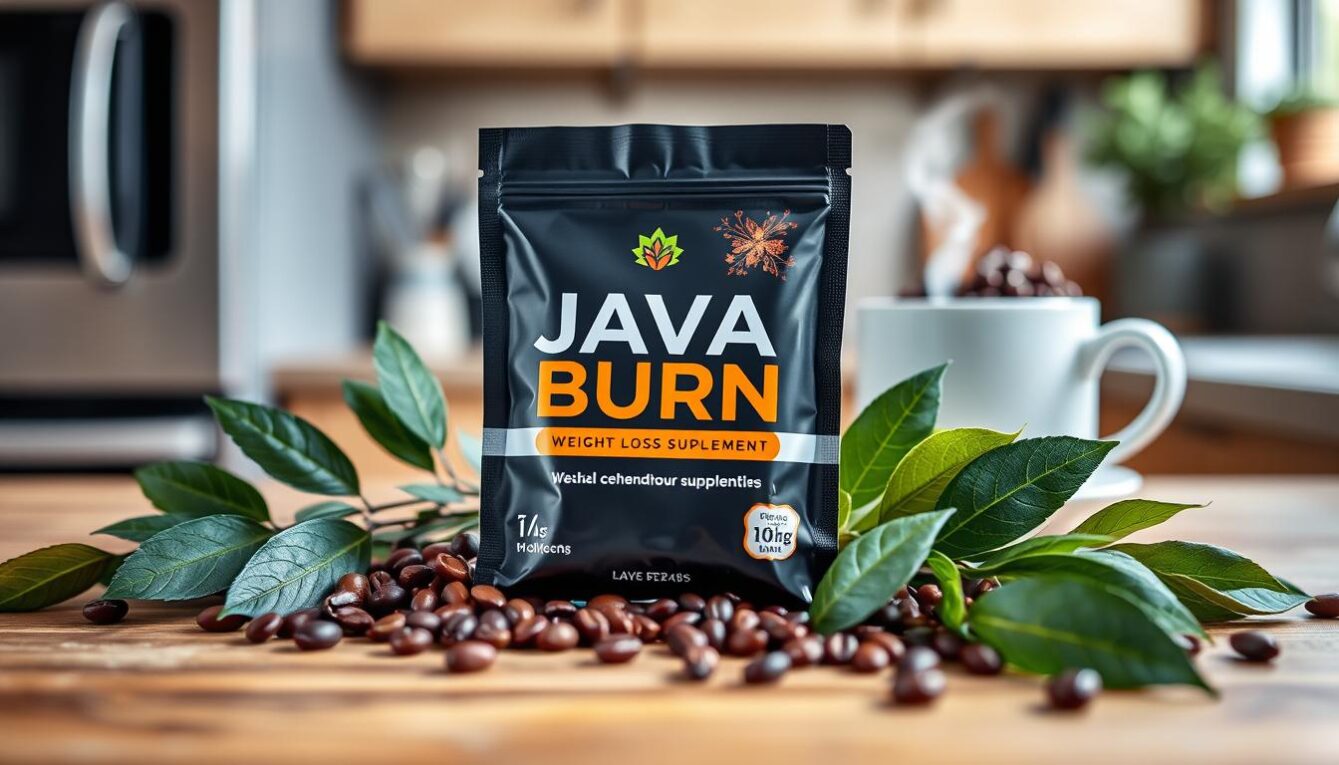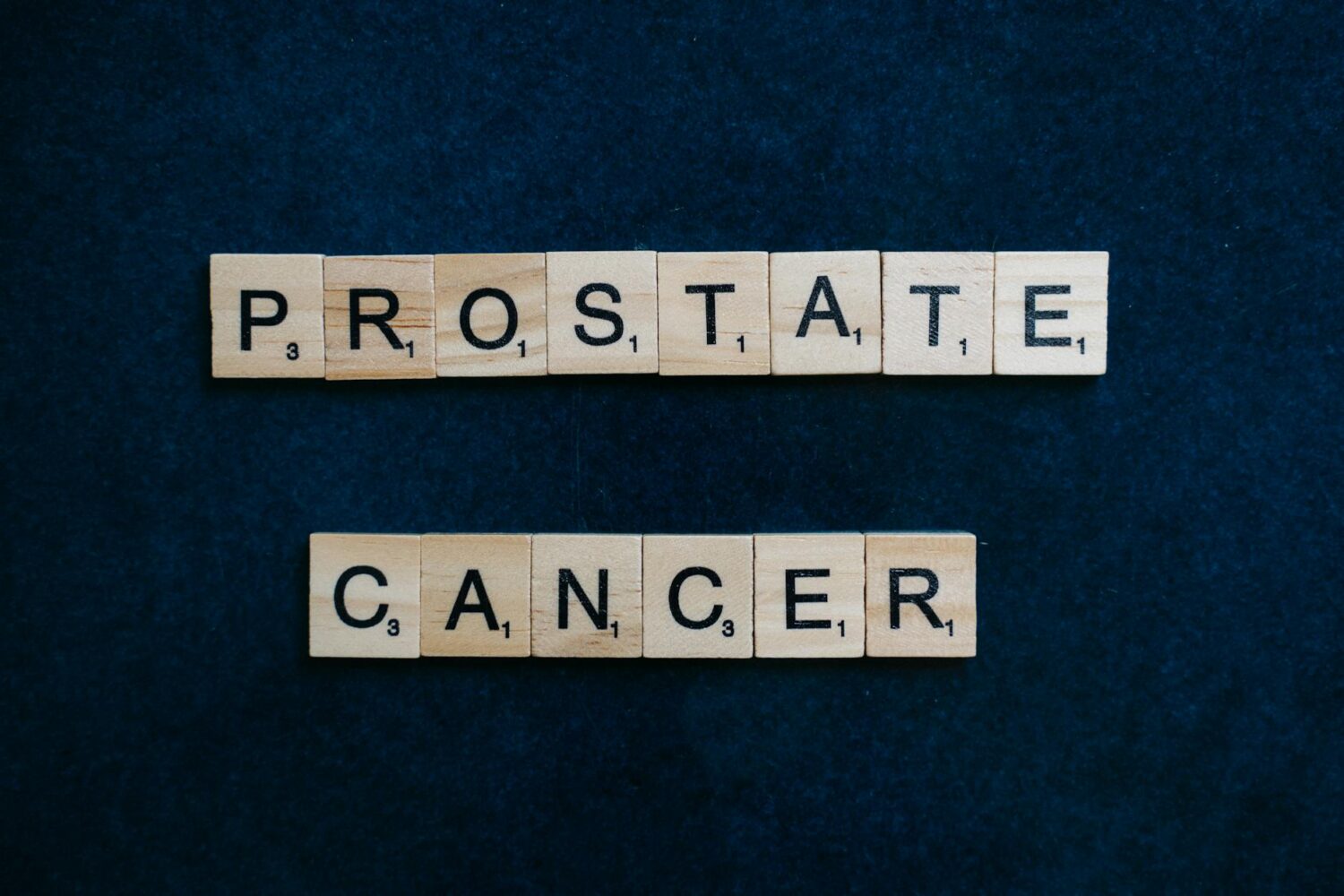Have you ever stood in front of the mirror, upset about the fat around your belly? Many of us face this challenge. But, there are good ways to lose belly fat that science supports.
We’re looking at proven strategies that target belly fat. These methods work through different ways. You’ll learn what works and why. This will help you make a plan that fits your body’s needs.
We want to show you the best ways to lose belly fat, backed by science. These methods will help you reach your body goals. Whether you’re just starting or have been trying for years, these tips will help you make smart health choices.
Key Takeaways
- Understand the physiological challenges of losing belly fat
- Learn about the most effective, science-backed methods for fat loss
- Create a personalized plan tailored to your body’s needs
- Discover how to sustain your weight loss over time
- Empower yourself with knowledge to make informed health decisions
The Truth About Belly Fat: Why It’s So Hard to Lose
You’ve tried many diets and exercises, but belly fat stays. What’s the reason? It’s because of the different types of fat and how they react to what we do.
Belly fat is more than just a look issue. It’s a complex problem caused by hormones, genes, and lifestyle. To beat it, you must understand what you’re facing.
Visceral vs. Subcutaneous Fat: Understanding the Difference
There are two kinds of belly fat: visceral and subcutaneous. Visceral fat wraps around your organs. Subcutaneous fat is just under your skin. Visceral fat is bad because it makes harmful chemicals.

Health Risks of Excess Abdominal Fat
Too much belly fat, like visceral fat, can cause big health problems. These include type 2 diabetes, heart disease, and some cancers. Visceral fat is like an active endocrine organ, making bad hormones and chemicals.
| Health Risk | Description |
|---|---|
| Type 2 Diabetes | Increased insulin resistance due to inflammatory compounds released by visceral fat. |
| Cardiovascular Disease | Higher risk of heart disease due to increased blood pressure and cholesterol levels. |
| Certain Cancers | Potential link between excess visceral fat and increased risk of specific cancers. |
Setting Realistic Expectations for Belly Fat Loss
Losing belly fat takes time, but you can set yourself up for success. It’s not just about willpower. You need to understand the biological processes and the time it takes to see results.

Timeframes for Visible Results Based on Research
Studies show that diet, exercise, and lifestyle changes help a lot. Here’s what research found:
- A 5-10% reduction in body weight can happen in 12-16 weeks with hard work.
- Results can start to show in 2-4 weeks, but it’s different for everyone.
Why “Fast” Doesn’t Mean Overnight
The idea of quick results is tempting, but it’s not always possible. Crash diets and too much exercise might work fast. But they’re hard to keep up and can lead to gaining weight back. Good weight loss tips are about making lasting changes, not quick fixes.
To lose belly fat well, eat right, exercise often, and manage stress. This approach helps you lose fat and get healthier.
The Science Behind Effective Belly Fat Reduction
Before we talk about losing belly fat, let’s understand how it works. Your body doesn’t just burn fat easily. It’s a complex process involving hormones, metabolism, and how much energy you use.
Debunking the Spot Reduction Myth
Many think doing lots of crunches will get rid of belly fat. But that’s not true. Spot reduction, or losing fat in one area by exercising it, is a myth. When you exercise, you burn energy from all over your body, not just the muscles you’re working.
This is because fat is released into your bloodstream from fat stores all over your body. It’s not just from the area you’re exercising.
How Your Body Actually Burns Fat
So, how does fat loss really happen? It’s a multi-step process. First, your body needs to use more energy than it takes in—a calorie deficit. When that’s the case, your body starts to break down stored fat (triglycerides) into fatty acids.
These fatty acids are then released into your bloodstream. They’re transported to your muscles, where they’re burned by your mitochondria. The energy-producing structures within your cells.
This process is influenced by hormones like insulin, adrenaline, and noradrenaline. They play key roles in fat mobilization and metabolism.
Method1: High-Intensity Interval Training (HIIT)
High-Intensity Interval Training (HIIT) is a top choice for losing belly fat. It’s become very popular in the fitness world.
Clinical Evidence Supporting HIIT for Abdominal Fat Loss
Many studies show HIIT is better than steady cardio for losing belly fat. HIIT can lead to more fat loss in less time. It works by keeping your body burning calories long after you stop exercising.
HIIT also helps your body use insulin better. This is key for losing belly fat. Belly fat is linked to heart disease and diabetes.
Beginner-Friendly HIIT Protocols
HIIT can be safe for beginners with the right start. Two easy plans are great for beginners: a 10-minute workout and a 20-minute full-body routine.
10-Minute HIIT Workout for Busy Schedules
This workout uses simple moves that don’t need any equipment. It gets your heart rate up to help burn calories. Examples include:
- 30 seconds of burpees followed by 30 seconds of rest
- 30 seconds of jump squats followed by 30 seconds of rest
- 30 seconds of mountain climbers followed by 30 seconds of rest
Do the circuit for 10 minutes. You can make it harder or easier based on how fit you are.
20-Minute Full-Body HIIT Routine
This routine uses moves that work many muscles at once. It burns a lot of calories and builds strength. Examples include:
- 45 seconds of squat jumps followed by 15 seconds of rest
- 45 seconds of plank jacks followed by 15 seconds of rest
- 45 seconds of lunges followed by 15 seconds of rest
Do the circuit for 20 minutes. Adjust the intensity and rest times as you see fit.

Method 2: Strategic Strength Training
Building muscle through strength training helps reduce belly fat. It’s not just about muscle; it also boosts fat burning.
How Building Muscle Accelerates Fat Metabolism
Strength training makes your body burn more calories when you’re not moving. Each pound of muscle burns about 6 calories a day. This means you burn fat all day, every day.
Strength training also helps with hormones that burn fat. It boosts testosterone, growth hormone, and adiponectin. These hormones help you lose fat better.
Optimal Strength Exercises for Core Definition
Choose compound exercises that work many muscles at once. These exercises build strength and boost your metabolism. This helps you burn more calories.
Compound Movements That Target Multiple Muscle Groups
Great compound exercises include squats, deadlifts, bench presses, and overhead presses. They work big muscles like legs, back, and chest. You can adjust them to fit your fitness level.
| Exercise | Primary Muscle Groups | Secondary Muscle Groups |
|---|---|---|
| Squats | Quadriceps, Hamstrings, Glutes | Core, Lower Back |
| Deadlifts | Hamstrings, Glutes, Lower Back | Core, Quadriceps, Traps |
| Bench Presses | Chest, Shoulders, Triceps | Core |
| Overhead Presses | Shoulders, Triceps | Upper Back, Core |
Resistance Training Frequency for Maximum Results
For best results, balance training with rest. Do 3-4 strength training sessions a week. Each session targets different muscles. This lets your muscles recover while staying challenged.
“Consistency is key when it comes to strength training. By incorporating a well-structured strength training program into your fitness routine, you can build muscle, boost your metabolism, and accelerate belly fat loss.”
Method 3: Anti-Inflammatory Nutrition Strategy
To lose belly fat, you need an anti-inflammatory nutrition strategy. This strategy targets belly fat causes. It’s more than just counting calories. It focuses on foods that affect fat distribution.
Foods That Actively Fight Belly Fat
Adding the right foods to your diet helps fight belly fat. Some foods boost your metabolism, reduce inflammation, and improve gut health.
Protein Sources That Boost Metabolism
Protein-rich foods help you lose fat. They have a high thermogenic effect. This means your body burns more calories digesting them. Good examples are:
- Lean meats like chicken and turkey
- Fish rich in omega-3s, such as salmon and sardines
- Legumes, including lentils and chickpeas
Fiber-Rich Foods That Reduce Bloating
Fiber is key for reducing bloating and controlling hunger. Include:
- Soluble fiber sources like oats and barley
- Insoluble fiber sources like whole wheat and vegetables
- Fruits high in fiber, such as berries and apples
Healthy Fats That Support Fat Loss
Healthy fats are important for losing fat. They improve how your body works and hormone production. Good examples are:
- Avocados
- Nuts and seeds, like almonds and chia seeds
- Fatty fish, as mentioned earlier
Foods That Promote Abdominal Fat Storage
Some foods help you lose belly fat, while others make you gain it. Knowing which to avoid is key for losing fat.
Hidden Sugar Sources to Eliminate
Hidden sugars in healthy-looking products can stop your progress. Watch out for:
- Processed foods with added sugars
- Sugary drinks, like flavored waters and juices
- Baked goods and sweetened yogurts
Inflammatory Foods That Sabotage Progress
Some foods cause inflammation, leading to more belly fat. Try to limit or avoid:
- Processed meats
- Refined carbohydrates
- Foods high in saturated and trans fats
Method 4: Stress Management for Hormonal Balance
Chronic stress can stop you from losing weight, mainly around your belly. It triggers your body’s ‘fight or flight’ mode. This releases hormones like cortisol, which affects your belly fat.
The Cortisol-Belly Fat Connection
Cortisol, or the ‘stress hormone,’ affects how fat is stored and used. High cortisol levels make you hungry for foods high in calories. It also makes it hard for your body to control blood sugar.
Plus, cortisol tells your body to store fat in your belly. This fat is not just stored; it’s active and can cause metabolic problems.
Research-Backed Stress Reduction Techniques
Lowering stress is key to losing belly fat. It’s backed by science. Techniques that lower cortisol help you lose weight, mainly around your belly.
Mindfulness Practices with Proven Results
Mindfulness, like meditation and deep breathing, lowers cortisol. It also helps your metabolism. These practices calm your nervous system and reduce stress hormones.
Doing these regularly can help you lose belly fat.
Physical Activities That Lower Stress Hormones
Some exercises are great for lowering stress hormones. Yoga and tai chi are good examples. They reduce cortisol and improve how you handle stress.
These activities also make you feel calm and happy. They help you on your weight loss journey.
Method 5: Sleep Optimization Protocol
Getting enough sleep is key to burning fat naturally. Not enough sleep makes it hard for your body to lose weight, mainly around the belly. Lack of sleep also makes you hungrier and less full, making it tough to eat healthy.
How Sleep Deprivation Triggers Weight Gain
Sleep loss makes you gain weight in many ways. It raises stress hormones that make you store fat around your belly. It also messes with how your body handles sugar, leading to insulin resistance.
People who don’t sleep well lose more muscle and less fat than those who do. Sleep helps control hunger and fullness hormones and supports metabolism.
Science-Based Sleep Improvement Strategies
Improving sleep needs a mix of changes in your environment and how you behave. Using science-backed methods can make your sleep better and help you lose belly fat.
Creating the Optimal Sleep Environment
To make your bedroom better for sleep, try these:
- Keep your bedroom cool, ideally between 60-67°F (15-19°C), to promote better sleep.
- Use blackout curtains or blinds to eliminate light exposure.
- Invest in a comfortable mattress and pillows.
- Reduce exposure to electromagnetic fields by keeping electronic devices out of the bedroom or using airplane mode.
Evening Routines That Enhance Fat-Burning Sleep
Having a regular evening routine helps your body get ready for sleep. Here are some evening activities to try:
- Finish eating at least 2-3 hours before bedtime to allow for proper digestion.
- Avoid screens and electronic devices for at least an hour before bed due to the sleep-disrupting effects of blue light.
- Engage in relaxing activities such as reading, meditation, or a warm bath to help your body wind down.
- Consider incorporating gentle stretches or yoga to promote relaxation and reduce stress.
By focusing on sleep and using these tips, you can help your body burn fat naturally and reach your weight loss goals.
Method 6: Strategic Intermittent Fasting Approaches
To lose belly fat, try strategic intermittent fasting. It’s a big help for losing fat, mainly around the belly.
Clinical Research on Fasting and Visceral Fat Reduction
Many studies look at fasting and fat loss. They found fasting can cut down belly fat a lot. This is more than just eating less.
Fasting helps burn fat better. It also makes your body use insulin better. Plus, it starts a process where cells clean themselves.
Key Findings:
- Intermittent fasting helps lose fat but keeps muscle.
- It makes your body better at using insulin.
- Fasting helps cells clean themselves out.
Beginner-Friendly Fasting Protocols
If you’re new to fasting, start simple. The 16:8 method is a good place to begin. You fast for 16 hours and eat in an 8-hour window.
16:8 Method Implementation Guide
To start the 16:8 method:
- Pick an 8-hour eating time that fits your life, like 10 AM to 6 PM.
- Drink water or unsweetened drinks during fasting.
- Make sure your meals are balanced during your eating time.
Modified Fasting for Sustainable Results
Some people prefer modified fasting like the 5:2 diet. It’s more flexible and fits different lifestyles better.
| Fasting Method | Description | Potential Benefits |
|---|---|---|
| 16:8 | 16 hours fasting, 8 hours eating window | Easy to follow, improves insulin sensitivity |
| 5:2 | Normal eating for 5 days, calorie restriction for 2 days | Flexible, can be less restrictive than continuous fasting |
| Alternate Day Fasting | Alternate between days of normal eating and days of calorie restriction or fasting | Can lead to significant weight loss, improves metabolic health |
By using these fasting methods, you can lose weight fast. It’s a great way to reach your weight loss goals.
How to Lose Belly Fat Fast: Method 7 – Consistency Systems
Creating a system that helps you stay consistent is key for losing belly fat fast. You need a plan that goes beyond just wanting to lose weight. It should help you build habits that last a long time.
The Psychology of Sustainable Fat Loss
Losing fat in a way that lasts isn’t just about dieting or working out. It’s about understanding how habits work. Your brain makes habits through a cycle of cue, routine, and reward.
To lose belly fat quickly, you need to make your environment support healthy habits. Find out what cues you have and change bad routines for better ones. For example, if stress makes you eat too much, try going for a walk instead.
Building Habits That Ensure Long-Term Success
To make habits that last, start small and be consistent. Using “implementation intentions” and “habit stacking” can really help. Implementation intentions mean planning when and where you’ll do something, making it easier to do it.
Habit stacking means adding new habits to ones you already have. For example, if you brush your teeth every morning, add drinking water or doing a quick workout right after.
Tracking Methods That Maintain Motivation
Tracking your progress is key to staying motivated. But it’s not just about weighing yourself. It’s about noticing how your clothes fit, your energy, and how you feel overall.
Use both digital tools and old-school methods to see how you’re doing. For example, keep a food diary or use a mobile app to track what you eat. A fitness tracker can help you see how active you are.
Overcoming Common Plateaus and Setbacks
Plateaus and setbacks happen, but they don’t have to stop you. To get past them, figure out if it’s a real plateau or just normal ups and downs.
To break through, check your diet and exercise, manage stress, and get enough sleep. Remember to be kind to yourself and don’t give up when things get tough.
Measuring Progress Beyond the Scale
Losing belly fat is more than just seeing a lower number on the scale. It’s about how your body changes and gets healthier. As you use the tips from this article, track your progress in ways that matter more than just weight.
Effective Metrics for Tracking Belly Fat Reduction
Use these metrics to see how you’re doing:
- Waist circumference measurements
- Waist-to-hip ratio calculations
- Body fat percentage assessments
- Progress photos
These tools give a better view of your journey. You might lose fat but gain muscle. This can make the scale not show your progress.
| Metric | Description | Frequency |
|---|---|---|
| Waist Circumference | Measure around the narrowest part of your natural waistline | Weekly |
| Waist-to-Hip Ratio | Compare your waist measurement to your hip measurement | Monthly |
| Body Fat Percentage | Assess the percentage of your body that is fat | Monthly |
Setting Realistic Milestones and Expectations
Setting goals is key to staying motivated. Think about where you start, how often you work out, and the tips you follow.
Non-scale victories (NSVs) are also key. These include:
- Improved energy levels
- Reduced inflammation markers
- Better-fitting clothes
- Enhanced mobility
By focusing on these NSVs and the metrics above, you’ll see your real progress. This will keep you motivated on your journey to lose belly fat.
Conclusion: Creating Your Personalized Belly Fat Action Plan
Now you know seven ways to lose belly fat fast. It’s time to make a plan that’s just for you. Start by picking the methods that fit your life and goals. You might start with diet and exercise for fat loss that’s easy for you.
Begin with simple changes like HIIT or better nutrition. As you start, make healthy lifestyle changes that you can keep doing every day. Add more strategies slowly to keep moving forward without getting too stressed.
Be ready to change your plan if your body tells you to. It’s important to be flexible and listen to what your body needs. This way, you can make progress and feel good about it.
Using a mix of methods can work better than just one. This way, you might see even better results. So, take the first step today. Start on your journey to a healthier, more confident you.













